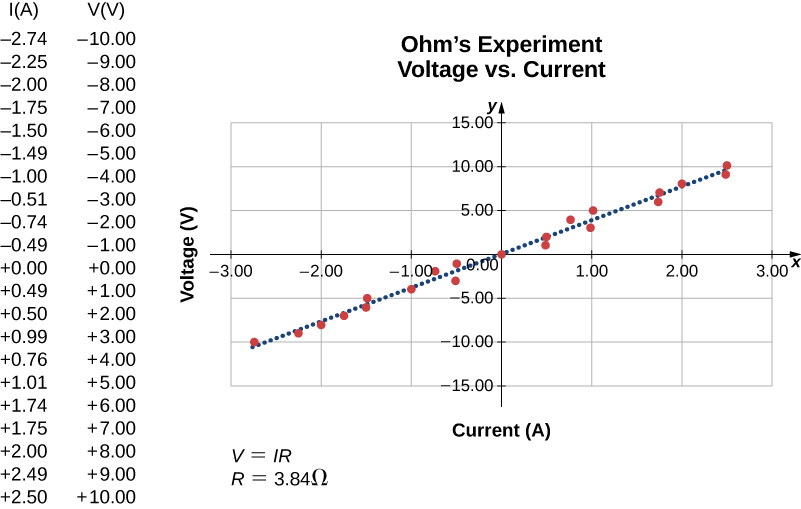| << Chapter < Page | Chapter >> Page > |

In this experiment, the voltage applied across the resistor varies from −10.00 to +10.00 V, by increments of 1.00 V. The current through the resistor and the voltage across the resistor are measured. A plot is made of the voltage versus the current, and the result is approximately linear. The slope of the line is the resistance, or the voltage divided by the current. This result is known as Ohm’s law :
where V is the voltage measured in volts across the object in question, I is the current measured through the object in amps, and R is the resistance in units of ohms. As stated previously, any device that shows a linear relationship between the voltage and the current is known as an ohmic device. A resistor is therefore an ohmic device.
(b) First, the resistance is temperature dependent so the new resistance after the resistor has been heated can be found using . The current can be found using Ohm’s law in the form .
Check Your Understanding The voltage supplied to your house varies as . If a resistor is connected across this voltage, will Ohm’s law still be valid?
Yes, Ohm’s law is still valid. At every point in time the current is equal to , so the current is also a function of time, .
See how the equation form of Ohm’s law relates to a simple circuit. Adjust the voltage and resistance, and see the current change according to Ohm’s law. The sizes of the symbols in the equation change to match the circuit diagram.
Nonohmic devices do not exhibit a linear relationship between the voltage and the current. One such device is the semiconducting circuit element known as a diode. A diode is a circuit device that allows current flow in only one direction. A diagram of a simple circuit consisting of a battery, a diode, and a resistor is shown in [link] . Although we do not cover the theory of the diode in this section, the diode can be tested to see if it is an ohmic or a nonohmic device.

Notification Switch
Would you like to follow the 'University physics volume 2' conversation and receive update notifications?